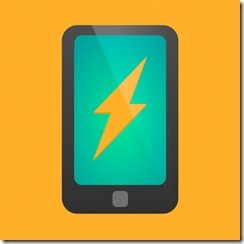You’ve got the hottest new smartphone available and are pretty proud of it. All of that power in your pocket means you have between 12 and 24 hours of power in the battery, if you spend the day texting, emailing, watching videos and listening to music. Learn how to save that juice so you’ll have power when you need it.
The key to good battery management is to know how your battery works, what takes the most juice, how to run the apps that you need at the moment and stop processes that you don’t need.
Your Power Center
Unlike the older nickel batteries that you had to “train” when recharging, your smartphone has a lithium-based battery that needs to be topped off to work best, says Gizmodo. Never let your battery hit zero charge and recharge it from there to 100 percent. This will shorten the life of the battery. Let it get down to 40 or 50 percent then charge it back up.
Even though another charger might fit, use the one that came with the battery. It’s calibrated to that battery and when 100 percent charged, it’ll cut out and let the battery drain. Using a USB charging cable is usually not a problem because the charge is so small over a long period of time.
Heat is bad for a mobile phone battery. You can actually reduce the battery life by 30 percent if your leave the phone in the sun. Keep your phone in a cool, shady place. When accessorizing your phone, keep it cool too. Check out these cases at T-Mobile for one that provides good ventilation to the battery.
You can expect to get three to five years of life out of your battery. You’ll probably trade your phone in before you need to replace the battery. But just in case, take care of the battery to get the maximum life out of it.
The Power Vampires
Right out of the box there are features that rob your phone of power. Determine which ones you really need to have and work around them.
Vibration uses more power than ringtones, says Hongkiat, so disable all vibrations, including the keyboard feedback and notifications. Your display uses the most of your battery so adjust it to the dimmest setting that still lets you read it comfortably. At least use the auto-brightness feature on your phone and let it adjust accordingly.
Reduce the screen time-out so it goes blank soon after interacting with it. If you can, get into the habit of locking the phone after using it to turn off the display. At least shorten the time-out so your phone isn’t sitting idle for minutes burning up the battery with the display on.
If you know that you’re not going to be using your phone for a while, turn it off. It’s still using power while locked and the display is blank. Working out in the gym, sitting in a movie theater or during a class lecture are good times to keep your phone off. You’ll extend your battery much more if the phone is off a couple of hours each day.
Turn Off What You’re Not Using
If you’re not using Bluetooth, GPS, Wi-Fi or LTE, turn them off, suggests Giga OM. When on, they are actively seeking to connect with a signal or device, and taking up battery resources.
Some apps don’t have an “Exit” option, so learn how to stop apps on your particular smartphone and make sure you haven’t left any apps running in the background. The Advanced Task Killer, available for free for Android devices, makes it easy to detect and stop processes that you don’t need running. This frees up memory as well as saves your battery.


